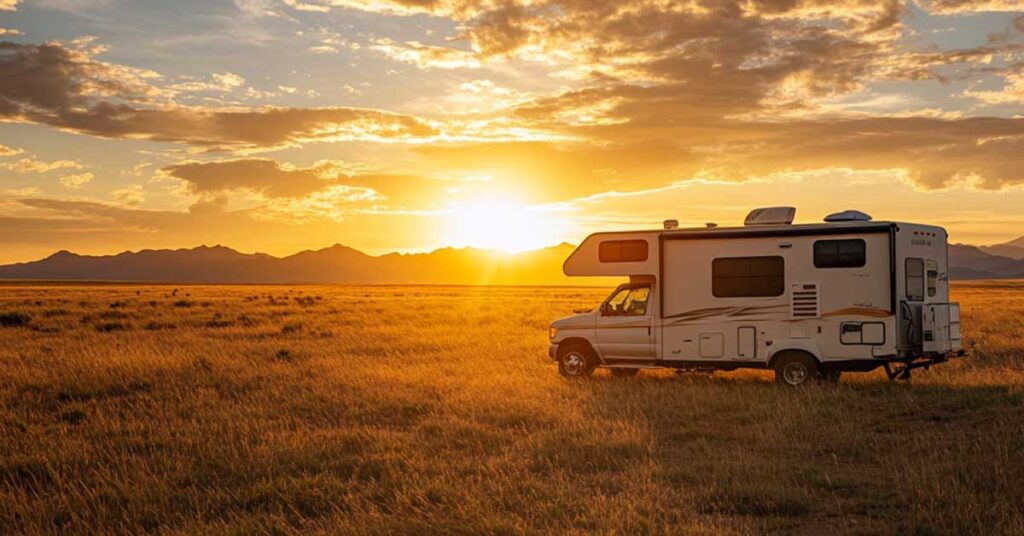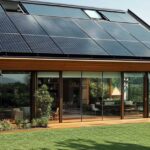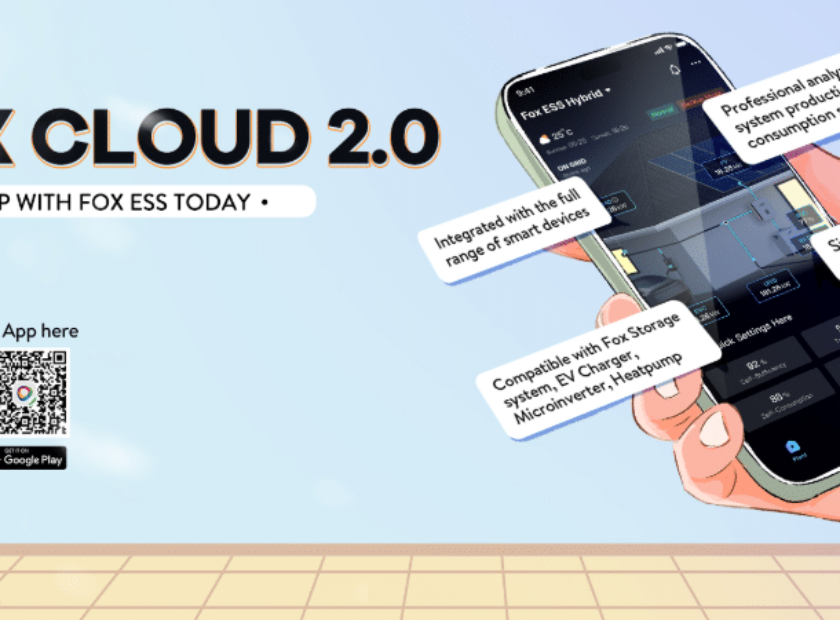If you’re dreaming of off-grid freedom, Solar Power for Your RV is the key to enjoying modern comforts while staying connected to nature. By harnessing the sun’s energy, you can power your appliances, reduce fuel costs, and eliminate the noise of generators—allowing you to truly relax wherever your adventures take you. With solar power for your RV, not only do you make an eco-friendly choice, but you also unlock the flexibility to camp in more remote and scenic spots without sacrificing convenience. Here’s a complete guide to get you started on your solar-powered journey.
Here’s everything you need to know to make your solar-powered RV adventure a reality.
You May Also Like: Living Off-Grid: Solar Power and Batteries Explained
Why Solar Power for Your RV?
Solar power offers an array of benefits that make it the perfect choice for RVers, especially those who love off-grid camping. Not only is it silent and eco-friendly, but solar is also self-sustaining; once installed, it’s low-maintenance and efficient. While the initial cost may be a hurdle, consider it an investment that pays off every time you avoid a fuel fill-up.
And let’s not overlook the freedom factor. With solar power, you’re not tied to crowded campgrounds or reliant on noisy, bulky generators. Solar offers the liberty to venture deeper into nature and stay there longer.
You May Also Like: Difference Between Hybrid and Off-Grid Inverter

Setting Up Solar Power: What You’ll Need
Setting up a solar power system for your RV requires some investment and a few key components to ensure smooth operation. Here’s a breakdown:
1. Solar Panels
The first and most visible component of any solar system is the solar panels themselves. Solar panels capture sunlight and convert it into electricity, which is then fed into your RV’s power system. But not all solar panels are created equal. The size and number of panels depend on how much power you’ll need. Here’s a basic guide:
- 100-watt panel: Ideal for small electronics and low energy usage.
- 200–400-watt setup: Suitable for basic appliances like lights and chargers.
- 500 watts and above: Powers larger devices such as refrigerators and TVs.
Most RVers start with a few panels and scale up as they get a feel for their power needs. Brands like Renogy and Go Power! offer great options, including portable solar panels if you want flexibility.
2. Solar Charge Controller
Solar power doesn’t just flow directly from your panels to your batteries. Before it gets there, it passes through a solar charge controller. This device regulates the energy going to your batteries, preventing overcharging and thereby extending your battery’s lifespan.
MPPT controllers (Maximum Power Point Tracking) are more efficient, especially in cloudy or variable weather conditions, making them the better choice for RVers.
You May Also Like: Mastering Voice Search and Local SEO: Boost Your Business Visibility in 2024
3. Battery Bank
Once captured, the sun’s energy needs somewhere to be stored, and this is where your battery bank comes in. For RV setups, deep-cycle batteries are the way to go because they’re designed to provide steady power over long periods. Options include:
- Lead-acid batteries: Affordable but heavy and require maintenance.
- Lithium-ion batteries: Lightweight, maintenance-free, and have a longer lifespan—though they’re more expensive up front.
Going solar is a great time to consider upgrading your battery bank, especially if you’re going to rely on it for daily needs.
4. Inverter
To run standard household appliances, you need to convert DC power (stored in your batteries) into AC power. Enter the inverter, which takes DC energy and transforms it into the type of electricity used by most devices. For RV solar setups, consider a pure sine wave inverter; it provides cleaner, stable power, which is crucial for sensitive electronics.
You May Also Like: Best Meditation Apps of 2024
Choosing Your Solar Setup: DIY or Pre-Built Kit?
You have two main routes: piecing together individual components or buying a pre-built kit.
- Individual Components: This approach lets you customize each part, but it requires knowledge to ensure compatibility. Going a la carte can be more affordable if you already own some parts or need a very specific setup.
- Pre-Built Solar Kits: Kits simplify the process and take the guesswork out of compatibility. Brands like Renogy and Go Power! offer all-inclusive kits ranging from 100 watts to over 500 watts. These come with panels, charge controllers, wiring, and even inverters. The convenience may be worth the cost, especially for beginners.
Installation Tips for RV Solar Panels
Whether you’re doing it yourself or hiring help, keep these installation tips in mind:
- Panel Placement: The roof is the best location for most solar panels, but portable panels let you reposition for optimal sun exposure.
- Securing the Panels: Use sturdy brackets or racks, and ensure that they’re firmly anchored to your RV. Make sure any holes drilled into the roof are sealed to prevent leaks.
- Wire Routing: Connect the panels to the charge controller and batteries through the shortest route possible to minimize power loss. It’s best to use thick, durable wiring suited for outdoor conditions.
- Avoid Shading: Even a small shadow on one part of a panel can reduce its output. Position your RV in full sun whenever possible and clean the panels regularly to maximize efficiency.
How Much Solar Power Do You Need?
Your power needs will largely depend on your lifestyle. Start by calculating the wattage of the appliances you intend to use regularly. Here’s a rough guide:
- Fridge: 100–200 watts
- Laptop: 50–70 watts
- Lighting: 10–20 watts per light
- Coffee Maker: 800–1200 watts (although you might want to stick with a French press!)
After you tally up these estimates, add an extra 20–30% to account for energy loss and unexpected needs.
Maintenance Tips for Your RV Solar System
Keeping your solar system in top shape is vital for optimal performance and longevity. Here’s a checklist to maintain your setup:
- Clean the Panels: Dust, bird droppings, and other debris reduce panel efficiency. Clean with a soft cloth and mild detergent every few weeks or after particularly dusty trips.
- Inspect Connections: Check all wiring and connections to ensure everything is secure. Look for signs of wear, corrosion, or fraying.
- Monitor Battery Health: Use a battery monitor to keep an eye on charge levels and overall battery health. For lead-acid batteries, top off with distilled water as needed.
You May Also Like: Motivation Strategies for College Students: Proven Tips to Stay on Track
Troubleshooting Common Solar Power Issues
Even a well-designed system can have hiccups. Here’s how to tackle common issues:
- Low Output: If your system isn’t producing enough power, check for shade, dirt, or damage to the panels.
- Battery Draining Quickly: This could be due to low battery health or a faulty connection. A load test on each battery will reveal if they’re holding a charge.
- Inverter Issues: If appliances aren’t running, the inverter could be undersized, or you might have a poor connection. Verify that it’s compatible with your battery system.
Solar Power for Your RV: The Future of Off-Grid Living
A solar-powered RV isn’t just about practicality; it’s a lifestyle choice that prioritizes freedom, peace, and sustainability. It lets you enjoy all the beauty of nature without compromising comfort. As technology advances, solar systems are becoming more affordable and efficient, making it easier for everyone to join the solar revolution.
With the right setup, maintenance, and a bit of planning, solar power can open up a world of off-grid adventure. And once you experience the freedom of running on sun, you’ll wonder how you ever RVed without it.





